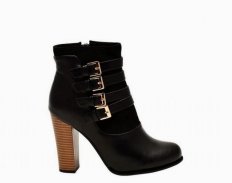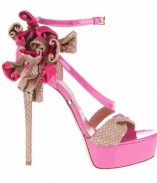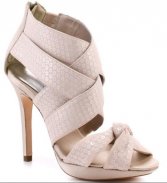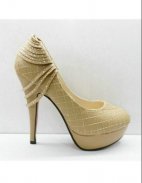



Descrição do high heel ideas
High heel shoes can have an amazing effect on women and are able to fill them with pleasure and excitement when shopping for them at Prada. The shoe in particular is a matter of contentious and heated discussion. No other shoe has gestured toward sexuality and sophistication as much as the high-heeled shoe. So many women are dreaming of having their closets full of shoes, but in reality they are merely pay attention to the fact that shoes could be one of the oldest inventions of our ancestors.
Around 1500, European nobility developed heels as a separate part of their shoes, primarily as a means to help keep their feet in BlackJack Playthe stirrups. The wear of heels by men quickly became the fashion norm, primarily in the courts, and this practice spawned the term, "well-heeled" as a reference to those who could afford the costlier shoes.
The modern European fashion of the high heel comes from the Italian "chapiney" or "chopine" style: mounted shoes on a 15 to 42 cm high cylinder. In 1430 chopines were prohibited in Venice, but nothing could stop the trend. The invention of the high heel is attributed to Catherine of Medici in Paris, in the 16th century, who used them due to her short stature, and soon introduced them into fashion amongst the European aristocracy. At the age of 14, Catherine de Medici was engaged to the powerful Duke of Orleans, later the King of France.
In 1791, the "Louis" high heels disappeared with the revolution, and Napoleon banished high heels in an attempt to show equality. Despite the Napoleonic Code against high heels, in 1793 Marie Antoinette went to the scaffold to be executed wearing two-inch heels.
In the 1860s, heels as fashion became popular again, and the invention of the sewing machine allowed greater variety in high heels. In Victorian art and literature, cartoons and allusions to tiny feet and the affliction of large feet (typical of the elderly spinster) were ubiquitous. Victorians thought that the high heel emphasized the instep arch, which was seen as symbolic of a curve of a woman.
While heels enjoyed widespread popularity in the late nineteenth century but the Depression during the 1930s influenced Western shoe fashion as heels became lower and wider.
With the creation of the miniskirt in the early 1960s, stilettos came into fashion and were attached to boots that enhanced the look of bare legs. A stiletto heel is a long, thin heel found on some boots and shoes, usually for women. It is named after the stiletto dagger, the phrase being first recorded in the early 1930s. Stiletto heels may vary in length from 2.5 centimetres (1 inch) to 5 cm (2 inches) or more if a platform sole is used.
Every woman deserves to wear shoes which match her outfit, look elegant and wrap her delicate feet. Whether they are lace up, platform or clear heel each of the shoes definitely compliments the outfit and makes the women love walking and feeling sexy.









